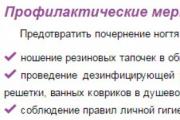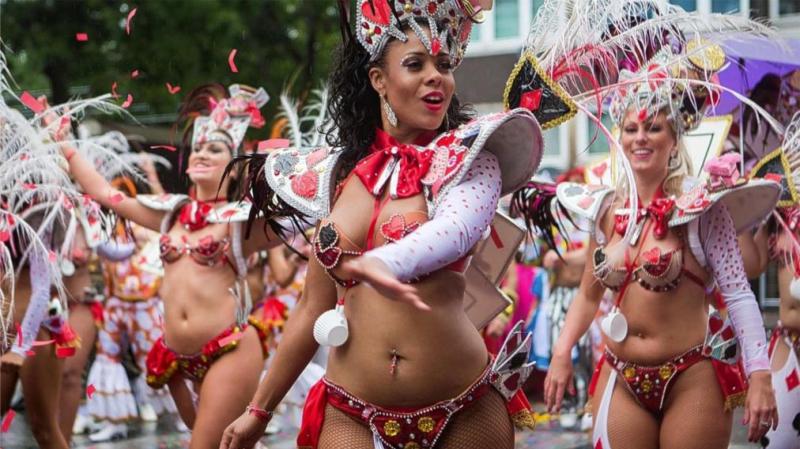Bus excursions, group hikes. Excursion tours in Russia and the CIS "Italian motives of the Moscow region" Serpukhov - Podmoklovo - Dubrovitsy
Bus - An apt Moscow word
07.05 (Sun) at 19:00
Tatiana Osipova
Our subjects will be, along with Moscow streets, mansions and boulevards, the little things of everyday life that have gone forever and its little secrets, as well as the bright, figurative speech of Moscow inhabitants: second-hand book dealers and antique dealers, waiters and waiters, barbers and hairdressers and other inhabitants of the pre-revolutionary city.
We will remember much of what has been forgotten, we will learn:
Where “the full type of the whole of Moscow gathered - from the cunning man to the rounded gentleman,”
Why second-hand booksellers had to be good psychologists,
What is “pack linden” and how can you use soap making recipes,
Where was the center of antique trade concentrated in Moscow and why antique business
"the most fraudulent"
Which “stallions” did Alexander III order to “calm down”?
Which of the 19th century journalists? could have bitten a dog on the street,
Who in Moscow solved the pressing issue with sewerage and water supply and how the Moscow public managed before?
What is the difference between a barber and a hairdresser and who is the main enemy in a lady's hairstyle?
What was the main remedy for almost all ailments (not what you think),
What kind of dish is this “chansonnetochka with side dish”, as well as “rapture and magic with sturgeon in galantir”,
...and much more.
And most importantly - “Still, I’m not some kind of subject, and I have my own genre in my soul.”
What is this? - the words of Chekhov's characters, the artist's imagination or copied from life?
We think that our excursion will help you and me give an answer.
Stops with exit: Sukharevskaya Square - Trubnaya Square - lanes between Tverskaya and Bolshaya Nikitskaya - Yar restaurant
End of the excursion: Pushkinskaya metro station
Ticket prices:
700 rubles
Bus route – Uglich and Boris and Gleb Monastery.
08.05 (Monday) at 08:15
Nikita Shangin
We invite you to educational one-day bus excursions from Moscow to Uglich and the Boris and Gleb Monastery.
The small quiet city of Uglich on the upper Volga, by the will of fate, found itself at the epicenter of Russian history on May 19, 1591. On this day, here, under circumstances that have not been clarified to this day, the last son of Ivan the Terrible, Tsarevich Dmitry, died. From this event, the flywheel of the civil war begins to gradually unwind, putting our country on the brink of a national catastrophe. It went down in history under the name of the Great Troubles.
60 km. from Uglich on the road to Rostov the Great there is the ancient Boris and Gleb Monastery. At the end of the 16th - beginning of the 17th century, his monk was Irinarch the Recluse, who spent 35 years in a stone bag in fasting and prayer. He went into seclusion as soon as the tragedy happened in Uglich, and came out only when Rus' finally overcame the consequences of the Time of Troubles. In fact, we can say that Irinarch the Recluse prayed for our country from destruction. In any case, we do not know of other ascetics of Orthodoxy in this era who would surpass him in the power of the feat of self-denial and prayerful fervor.
Thus, on this small patch of Russian Earth, two epoch-making historical events converged. The Great Troubles began here. This is where her spiritual overcoming began.
We will talk about this on our fascinating architectural and historical journey. We will visit the Uglich Kremlin, where Tsarevich Dmitry mysteriously died, and the Holy Spring near the village of Konakovo - the birthplace of St. Irinarch. We will also meet beautiful creations of Russian architecture. We will see the wonderful three-roofed Assumption Church in Uglich, for its beauty, popularly nicknamed Divna. We will visit the unique Uglich Resurrection Monastery, where all the main buildings are merged into one picturesque structure. And, of course, no one will be indifferent to the majestic ensemble of the Boris and Gleb monastery-fortress, where the Holy relics of St. Irinarch rest, and a memorial chapel was erected on the site of his seclusion.
Main objects:
Uglich Kremlin (historical and architectural complex in the historical center of the city of Uglich)
Church of Demetrius on Blood (Kremlin St., 2, Uglich, Yaroslavl region)
Alekseevsky Monastery in Uglich (Wonderful Assumption Church)
Resurrection Monastery (Spasskaya St., 31/2a, Uglich, Yaroslavl region)
Rostov Borisoglebsky Monastery (Borisoglebsky, Yaroslavl region)
8-00 Departure from VDNH metro station
Uglich (Walking tour + lunch time, approximately 3 hours)
IMPORTANT! Meals are not included in the excursion price. Please bring your own food.
Source of Irinarch the Recluse (Borisoglebsky district, Kondakovo village. Those who wish can plunge into the font)
Borisoglebsky Monastery (Borisoglebsky, Yaroslavl region, walking tour 1.5-2 hours)
18:30 Departure back
22:00 Arrival in Moscow, VDNH
Practical information:
Ticket prices:
1,800 rubles
Meeting place: st. Kosmonavtov 2, Karaoke bar, opposite the end of the Cosmos hotel. Scheme on the map below
How to find: m. VDNKh. The last car from the center, then along the transition to the left, to the Mira Avenue alternate (towards the region). Then walk 300m to the traffic light and turn right.
End of the excursion: VDNKh metro station
Duration: about 14 hours. Free time – 40-50 min.
Ticket price is 1,800 rubles.
For a group, a tour can be booked at any time convenient for you.
7 495-117-58-49
Honorary Architect of Russia;
The most important creative works:
Reconstruction of the Bolshoi Theater of Russia (author and project manager from 1999 to 2008);
Restoration of the Lunins' house on Nikitsky Boulevard in Moscow from the early 19th century (Museum of Oriental Art);
Restoration of the Church of the Presentation in Barashi in Moscow (17th century);
Comprehensive reconstruction and restoration of historical buildings on the street. School in Moscow;
Urban planning concept of the cultural and historical protected area "Zamoskvorechye";
Reconstruction of a residential building at st. B. Ordynka 9.
Project for a comprehensive reconstruction of the historical territory of the Kazan end in Rybinsk;
and much more
Please note:
According to the organizer's decision: The bus can be with seats (the location of seats on the bus may differ on the day of the excursion. Only the seat number is assigned to you) or with free seating.
Your seat number may be changed by decision of the organizer due to a change in bus or change in the composition of the excursion participants.
Take your passport with you or write down its number and series. The transport company will need this information
Bus - Moscow has many faces
bus - Moscow has many faces
08.05 (Monday) at 19:00
Tatiana Osipova
Beautiful Moscow in the evening festive lights is like a magic box decorated with gems.
Ancient chambers and modern buildings appear before us in all their glory; graceful silhouettes of churches and bell towers echo slender “Stalinist” high-rises; beautiful ancient palaces coexist with empire-style post-fire mansions. The luxurious and majestic Kremlin and Moscow monasteries personifying history itself - and much more is hidden in this city “box”, which you and I will open on our excursion.
Historical and modern Moscow, aristocratic and merchant Moscow, business and trade Moscow awaits us - Moscow is many-sided!
We will visit the most iconic places of our amazing city: in ancient Zaryadye, on the embankments of the Moscow River, in Zamoskvorechye and on the Arbat; We will see the Novodevichy Convent in the beautiful evening illumination, we will visit the Sparrow Hills and Kutuzovsky Prospekt, we will drive through cozy boulevards and central streets.
Stops with exit:
Meeting point: metro Chistye Prudy / metro Turgenevskaya / metro Sretensky Boulevard - exit to the city to Academician Sakharov Avenue to the VTB24 building. If you are facing the entrance to the VTB24 building, the group meeting will be at the left corner on Sakharov Avenue.
End of the excursion: Okhotny Ryad metro station / Teatralnaya metro station
Duration: about 3.5-4 hours
Guide: Tatyana Alekseevna Osipova is a professional tour guide with many years of experience. She worked at the Moscow excursion bureau as a guide and methodologist.
Individual excursions around Moscow with a guide can be ordered at any time convenient for you.
Ticket price: 700 rubles
Bus – from Moscow to Staritsa
13.05 (Sat) at 08:00
Nikita Shangin
We invite you to one-day bus excursions from Moscow to Staritsa
In the 15th-16th centuries, Staritsa was the capital of the last appanage principality in Rus', which was owned by the junior branch of the Moscow grand-ducal house. The Staritsa princes did everything to decorate their capital city. On the high left bank of the Volga there was once the ancient princely Kremlin-Detinets, from which majestic defensive ramparts have survived to this day. And on the right floodplain bank they are rebuilding the ancient Assumption Monastery. The fate of the family of princes Staritsky is tragic. In 1569 they were exterminated by order of Ivan the Terrible.
Today there is little that reminds us that Staritsa was once a capital city. This is a quiet, cozy town, picturesquely located on both banks of the upper Volga. Its appearance harmoniously combines medieval architecture with buildings in the style of provincial baroque and classicism. The expressive relief gives a special charm to the architectural appearance of the city.
No less impressive than the Staritsa itself are the places we visit on the way to it. First, we will examine the oldest white-stone church on Tver land in the village of Gorodnya, built at the turn of the 14th and 15th centuries. Then we will get acquainted with the Assumption Church in Ivanishi, the construction of which is associated with dark pages from the history of Muscovite Rus' at the beginning of the 16th century. And finally, just before Staritsa itself, we will visit the mid-18th century Chukavino estate, the main house and church of which represent baroque architecture, rare for central Russia.
Excursion program (time indicated is approximate):
8-00 Departure from Vodny Stadium metro station
Gorodnya village (excursion program for 40-50 minutes)
Village of Ivanishi (excursion program for 40-50 minutes - Assumption Church in Ivanishi (Church of the Assumption of the Blessed Virgin Mary)
Chukavino Estate (Excursion 30 min)
Stop for lunch. IMPORTANT! Meals are not included in the excursion price. Please bring your own food.
Staritsa (Excursion program about 3 hours. Holy Dormition Monastery (Lenin Street, 1, Staritsa, Tver region)
17:00 h. We return from Staritsa via Zubtsov and New Riga
20:00 Arrival in Moscow, Vodny Stadion metro station
Practical information:
Tourists visiting active churches and monasteries must dress in accordance with the rules of Orthodox piety.
There is a source of holy water on the territory of the Lavra; take a container with you.
The excursion will take place on a comfortable bus equipped with a speakerphone.
Ticket price: 1800
Meeting point: Kronstadt Boulevard, building 9 (how to find: before reaching the Vodny Stadion metro station, it will stop in a parking “pocket”,
direction of travel towards Leningradskoye Shosse)
End of the excursion: Vodny Stadium metro station
Duration: about 12 hours. Free time – 40-50 min.
Ticket price is 1,800 rubles.
You can ask a question by writing an email [email protected] or
7 495-117-58-49
The tour is conducted by Nikita Shangin:
Member of the Union of Architects of Russia since 1988;
Honorary Architect of Russia;
Professor of the Moscow Architectural Institute;
Laureate of the National Architectural Prize “Crystal Daedalus” and the Union of Architects “Golden Section” Prize.
The first game in the club “What? Where? When? played in 1981. Winner of the Crystal Owl (1988)
Bus - Night Beauty
14.05 (Sun) at 21:00
Just as you definitely need to see St. Petersburg at least once from the water, you also need to see Moscow at night - otherwise you can assume that you have never seen this city.
Moscow during the day is not exactly Cinderella - but, immersed in the routine bustle, it does not particularly care about making an impression. At night it’s a completely different matter! The bright lighting transforms it, like crystal slippers donated by a good fairy. How the diadem of the Garden Ring, shining with the spiers of high-rise buildings, suits her!.. How the necklace of the embankments shimmers on it...
Rush with us through Moscow at night, and in the very first minutes this beauty will enchant you. Absentmindedly playing with the curls of the Boulevard Ring, the reflections of the river from under the eyelashes of the Neskuchny Garden will suddenly flash into your eyes - and that’s it, you’re lost. The rest is nothing more than the completion of the magic, which will dissipate not at the twelfth stroke of the clock, but perhaps at dawn, and even then not forever, but only until the next night.
Stops with exit:
Moscow City (for photos), Sparrow Hills, Novodevichy Convent (for photos)
Display objects:
Igumnov's house on Yakimanka, Government House, high-rise building on Kotelnicheskaya, Kremlin embankment, Ostozhenka, Prechistenka, Smolensky Boulevard, Borodinsky Bridge, Kutuzovsky Prospekt, Moscow City, New Arbat, Znamenka, Bolotny Island.
and many others
Ticket price: 700
Meeting point: at the exit from the Oktyabrskaya Radialnaya metro station
End of the excursion: metro station "Oktyabrskaya radial"
Duration: 2.5 -3 hours
Guide: Victor S.
Bus - Seven sisters. Stalin's skyscrapers.
28.05 (Sun) at 12:00
Dmitry Polyakov
These buildings have been shrouded in legends since their construction, and it is no coincidence - after all, there are no such buildings anywhere else in the world. In an attempt to surpass American skyscrapers, Soviet architects achieved truly amazing results. Their brainchildren have added a unique flavor to the architectural appearance of our capital, and in terms of the number of rumors and myths circulating about them, the high-rise buildings are probably not inferior to either the Kremlin or the Moscow metro. Seven wonderful beauties, seemingly similar, but at the same time - each in its own way... We will visit each of them, talk about the architects who created them, briefly recall the history of the areas where they are located, discuss some features of construction technology and, of course , let's get acquainted with the legends of famous high-rise buildings.
The bus may be changed depending on the number of participants.
By purchasing a ticket you agree to these terms.
Take your passport with you or write down its number and series. The transport company will need this information.
The oldest district of historical Moscow, which formed in the 15th century east of the Kremlin on the site of trading and the Great Posad, was surrounded by powerful fortress walls in the 30s of the 16th century and received the name Kitai-Gorod.
It’s funny, but sometimes we heard careless guides translate this name to foreigners as Chinatown. Of course, this toponym has nothing to do with China, about which in Moscow in the 16th century they didn’t really know anything. But where this name came from, we will talk separately on the excursion. And it will become clear that the concept of “city” is very applicable precisely to this part of the Russian capital, and not at all to the skyscrapers behind Krasnaya Presnya.
But the main thing is that China Town to this day is a genuine historical and architectural “Sesame”, the door to which we have to open. We promise that even for native Muscovites there will be a lot of surprises and discoveries.
Kitai-Gorod has seen a lot in its 5-century history. The Moscow aristocracy settled here, and foreign embassy and trading yards were located here. Later, the aristocracy was replaced by the merchants. And in the 19th century, Kitay-Gorod, with the exception of Zaryadye, turned into a purely commercial and business area. And here were located the most ancient Moscow monasteries and the courtyards of the most revered Holy monasteries of Rus'. Here arose the first printing house in Rus' and the first university - the Slavic-Greek-Latin Academy, from which Moscow University grew 70 years later. And always, here, opposite the Kremlin walls, Moscow bargaining raged.

It was not the behind-the-scenes, as in the Kremlin chambers, but the public history of our country that was taking place here. The story is both tragic and glorious. After all, to this day, the heart of Russia “beats” here in Kitay-Gorod – Red Square. From the ceremonial entrance to it - the restored Resurrection Gate with the Iverskaya Chapel - we will begin our “journey through time”. And we’ll finish it by taking a winding path through the streets and alleys of Kitai-Gorod on the other side of Red Square, at the main altar of Russia - St. Basil’s Cathedral.
Venue: m. Revolution Square, exit the metro towards Revolution Square, meet the group at the top of the escalator.

End of the tour: on Red Square.
Note! Those who wish can go to the Trinity Church in Nikitniki and St. Basil's Cathedral; tickets will need to be purchased independently.
Guide: Nikita Shangin
Member of the Union of Architects of Russia since 1988. Honorary Architect of Russia, Professor at the Moscow Architectural Institute. Laureate of the National Architectural Prize “Crystal Daedalus” and the Union of Architects “Golden Section” Prize. One of the main creative projects is the Reconstruction of the Bolshoi Theater of Russia (author and project manager from 1999 to 2008.
Our contacts:
- Phone - +7 495 117 58 49
- Website -
We invite you to an architectural and historical walk with Nikita Genovich Shangin, a member of the “What? Where? When?”, winner of the Crystal Owl prize in 1988, honorary architect of Russia and professor at the Moscow Architectural Institute, author of many projects and reconstructions of buildings in Moscow and Russia.
"The Path to Trinity"
Komyagino – Tsarevo – Sofrino – Sergiev Posad
Bus excursion from Moscow.We invite you to educational walks with Nikita Genovich Shangin, a member of the “What? Where? When?”, winner of the Crystal Owl prize in 1988, honorary architect of Russia and professor at the Moscow Architectural Institute, author of many projects and reconstructions of buildings in Moscow and Russia.
On this excursion you will hear a story about architectural witnesses of the past on the Yaroslavl road.
"Italian motives of the Moscow region"
Serpukhov – Podmoklovo – Dubrovitsy
Bus excursion from Moscow.We invite you to educational walks with Nikita Genovich Shangin, a member of the “What? Where? When?”, winner of the Crystal Owl prize in 1988, honorary architect of Russia and professor at the Moscow Architectural Institute, author of many projects and reconstructions of buildings in Moscow and Russia.
On this excursion you will hear a story about architectural witnesses of the past on the Simferopol highway.
"From Moscow to Staritsa"
Staritsa – Ivanishi – Chukavino – Gorodnya
Bus excursion from Moscow.We invite you to an architectural and historical walk with Nikita Genovich Shangin, a member of the “What? Where? When?”, winner of the Crystal Owl prize in 1988, honorary architect of Russia and professor at the Moscow Architectural Institute, author of many projects and reconstructions of buildings in Moscow and Russia. On this excursion you will hear a story about architectural witnesses of the past of Staritsky district.
Shangin Nikita Genovich is a famous Russian architect, member of the popular club “What? Where? When?". He is the creator of many major architectural works, as well as the winner of the prestigious Crystal Owl prize.
Biography
Nikita Genovich Shangin was born on October 21, 1952 in Moscow. His father is the famous scientist Mr. Shangin-Berezovsky. After finishing school, he entered the capital's Institute of Architecture. And in 1976 he successfully graduated from it.
Famous family
Shangin Nikita Genovich comes from an old and famous family. His paternal great-grandfather was Feoktist Alekseevich Berezovsky. He was a famous prose writer of his time, a revolutionary, an underground activist and a party leader.
Nikita Genovich’s father was also known throughout the country and even to the world. Gen Nikiforovich Shangin-Berezovsky is a famous biologist, teacher, writer, composer and bard. He was the founder of the song culture of the Faculty of Biology of Moscow State University.
Nikita Shangin’s family line is also interesting on his mother’s side. It is known that his grandmother Umma Muratovna was related to Hadji Murat. She was the youngest in her family. Her father, in turn, was the youngest son of Hadji Murad, but he was born after his death.
Nikita Genovich Shangin is married, but there is no information about his wife. It is known that there is a child in this marriage. Nikita Genovich himself hopes that his only daughter will continue his family. Although he never insisted on her choice of profession.
Start of working career
After graduating from the architectural institute, Nikita Shangin, whose family consisted of creative personalities, began working at Mosproekt-2. He worked in the restoration department and was involved in the historical buildings of Zamoskvorechye. Here he worked for seven years. In 1991, Nikita Shangin, whose photo is presented in the article, went to work at the Kurortproekt architectural studio.

Attitude to faith
Nikita Genovich still tries to be a real Christian. He also has his own confessor, to whom he confesses from time to time. So far, such confessions have not yet entered Nikita Shangin’s life as a regular tradition. As he admitted in one of his interviews, he cannot yet accustom himself to fasting.
Orthodoxy is necessary for a Russian person to feel like an individual and to be free. Faith was instilled in Nikita Genovich in childhood by his grandfather. It was he who discovered Russia for the boy when he took him with him on trips to Holy Places. As a result, the future architect visited such large cities with an ancient and glorious history as Rostov, Pskov, Suzdal, Novgorod.
But Shangin is interested in churches not only as a source of Orthodoxy, where one can breathe easily and life seems simple. Seeing a new temple, he evaluates it, first of all, as a professional architect.
Architectural works
The architectural works of Nikita Genovich Shangin are known throughout the country. Among them we can highlight the most significant and significant ones. For example, the entrance to the Polish military cemetery at the Katyn Memorial Complex. The memorial itself is located in the Smolensk region, but is considered international because it is dedicated to the victims of political repression.
Nikita Genovich's work was aimed at changing the appearance of the military cemetery where military officers were buried. There are more than four thousand of their graves here. It is known that they were prisoners until the spring of 1940, but the prisoners of the Kozelsk camp were subsequently shot by NKVD officers. This landscape project, created in 1999, was noted as the best in Russia. Two years later he was awarded the prestigious Golden Ratio Prize.

Nikita Genovich Shangin, whose family constantly supports the architect, was also involved in the creation of the State Moscow Center for Contemporary Art, which is located on Zoological Street. He worked on this project for three years (from 1999 to 2002).
In October 1996, the Mednoye memorial complex was presented, which is located in the Tver region. The project itself was created in the workshop of the Russian Union of Architects. It is known that the main architect of this project was Nikita Genovich Shangin. This complex includes a memory lane, a ritual site in the shape of a triangle, 4 burials, and on the left side there is the Western Wall with a large bell and mass graves.

In 2003, Shangin's new project was unveiled - a monument to Vladimir Voroshilov. Nikita Genovich knew him personally. Therefore, he could not help but take part in the project dedicated to the famous TV presenter of the game “What? Where? When?". The monument was later installed at the Vagankovskoye cemetery.
Nikita Genovich Shangin is the chief architect of the reconstruction of the Bolshoi Theater building. Since the building had the status of a monument, it was necessary to restore it as accurately as possible. The building itself was damaged during the Soviet era. According to the project, it was planned not only to carry out reconstruction, but also to make some changes. For example, the architect was faced with the task of completely changing the northern part of the facade.
Reconstruction began in 2005. However, the deadlines were constantly delayed, and there were problems with financing. Due to disruptions in work, Nikita Genovich decided to leave the project. This was his kind of protest.
Participation in the game “What? Where? When?"
Nikita Shangin is a passionate and multifaceted person. He enjoys traveling, where he always takes photographs and videos. He also inherited a love of music from his father, but he is the only one who prefers classical music.
Such a versatile personality tried to find not only her favorite profession, but also the desire to know herself, see her knowledge, and show intuition. That’s why he wrote a letter to the editor of the famous intellectual television game “What? Where? When?". Very soon the architect received a positive response.

In 1981, he was invited to this educational elite club “Experts” for his first game in Alexander Sedin’s team. He stayed there for several years. Currently, Shangin is the owner of the famous and prestigious prize for this game, “Crystal Owl,” which he received in 1988.














